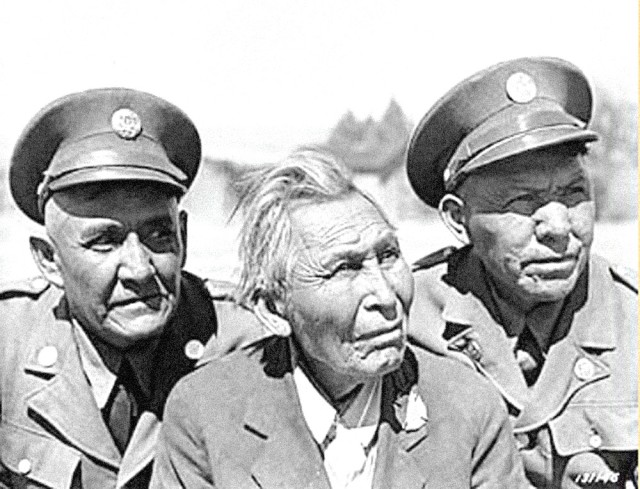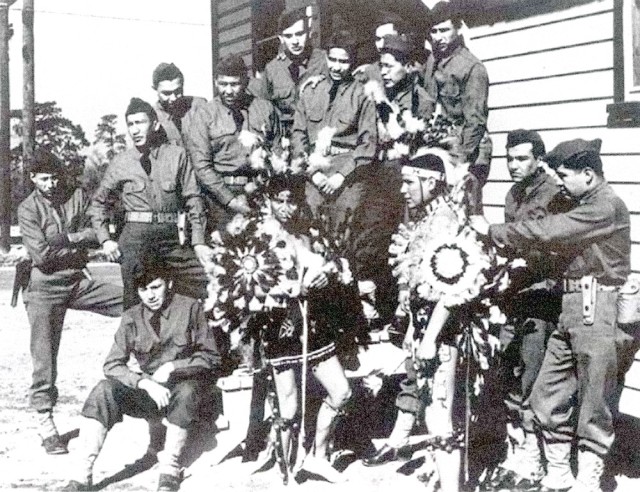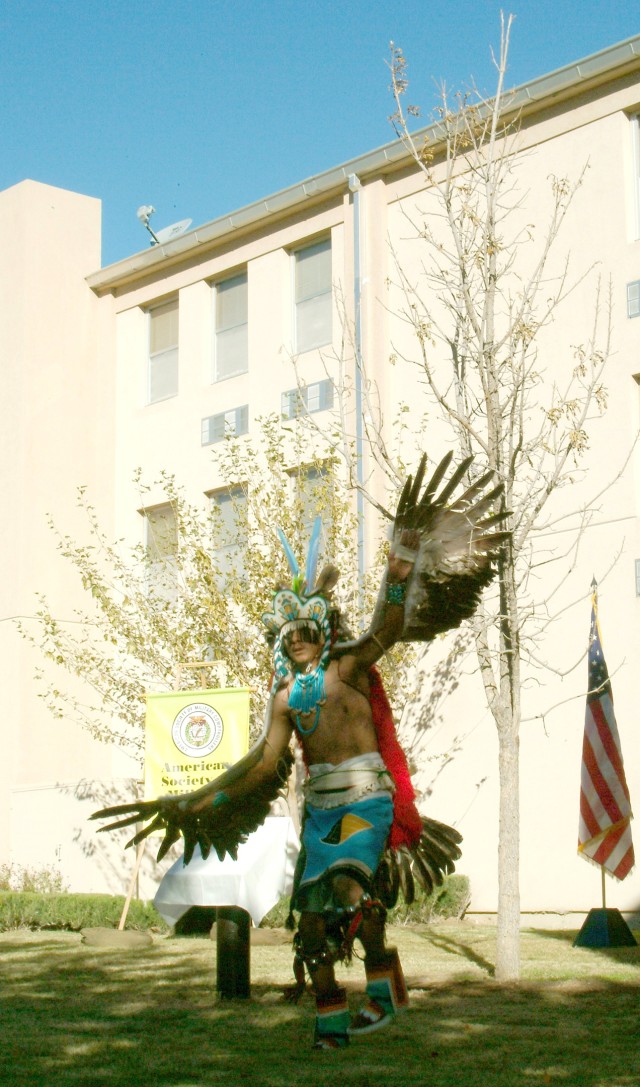On Aug. 3, 1990, President George H. W. Bush declared the month of November as National American Indian Heritage Month.
The bill read, in part, "The president has authorized and requested to call upon federal, state and local governments, groups and organizations, and the people of the United States to observe such month with appropriate programs, ceremonies and activities."
Since then, presidents have reiterated that proclamation each year with one of their own, eventually extending the proclamation to include Alaska Natives.
American Indians have participated with distinction in United States military actions for more than 200 years. Their courage, determination and fighting spirit were recognized by American military leaders as early as the 18th century.
In 1778, Gen. George Washington said, "I think they (Native American Indians) can be made of excellent use, as scouts and light troops."
Many tribes were involved in the War of 1812, and Indians fought for both sides as auxiliary troops in the Civil War. Scouting the enemy was recognized as a particular skill of the Native American Soldier.
In 1866, the U.S. Army established its Indian Scouts to exploit this aptitude. The Scouts were active in the American West in the late 1800s and early 1900s, accompanying Gen. John J. Pershing's expedition to Mexico in pursuit of Pancho Villa in 1916.
They were deactivated in 1947 when their last member retired from the Army in ceremonies at Fort. Huachuca, Ariz. Native Americans from Indian territories were also recruited by Teddy Roosevelt's Rough Riders and saw action in Cuba in the Spanish-American War in 1898.
As the military entered the 20th century, American Indians had already made a substantial contribution through military service and were on the brink of playing an even larger role.
It is estimated that more than 12,000 American Indians served in the United States military in World War I. Approximately 600 Oklahoma Indians, mostly Chotaw and Cherokee, were assigned to the 142nd Infantry of the 36th Texas-Oklahoma National Guard Division.
The 142nd saw action in France and its Soldiers were widely recognized for their contributions in battle. Four men from this unit were awarded the Croix de Guerre, while others received the Church War Cross for gallantry.
The outbreak of World War II brought American Indians warriors back to the battlefield in defense of their homeland.
Although now eligible for the draft by virtue of the Snyder Act, which gave citizenship to American Indians in 1924, conscription alone does not account for the disproportionate number of Indians who joined the armed services.
More than 44,000 American Indians, out of a total Native American population of less than 350,000, served with distinction between 1941 and 1945 in both European and Pacific theaters of war.
Native American men and women on the home front were also an integral part of the war effort, with more than 40,000 leaving their reservations to work in ordnance depots, factories and other war industries.
American Indians also invested more than $50 million in war bonds and contributed to the Red Cross and the Army and Navy Relief societies.
Battle-experienced American Indian troops from World War II were joined by newly-recruited Native Americans to fight Communist aggression during the Korean conflict. More than 42,000 Native Americans, more than 90 percent of them volunteers, fought in Vietnam.
Native American contributions in United States military combat continued in the 1980s and 1990s as they saw duty in Grenada, Panama, Somalia and the Persian Gulf.
Currently, there are nearly 190,000 Native American military veterans. It is recognized that, historically, Native Americans have the highest record of service per capita when compared to other ethnic groups.
The reasons behind this disproportionate contribution are complex and deeply rooted in traditional American Indian culture. In many respects, Native Americans are no different from others who volunteer for military service.
They do, however, have distinctive cultural values that drive them to serve their country. One such value is their proud warrior tradition. In part, the warrior tradition is a willingness to engage the enemy in battle.
This characteristic has been clearly demonstrated by the deeds of Native Americans in combat. However, the warrior tradition is best exemplified by the following qualities said to be inherent to most if not all Native American societies: strength, honor, pride, devotion and wisdom.
Related Links:
Center of Military History: Native Americans in the U.S. Army








Social Sharing